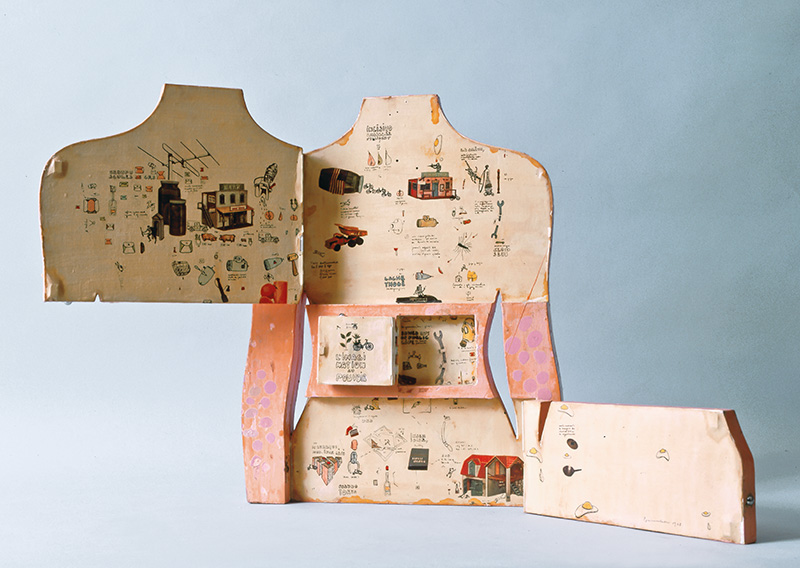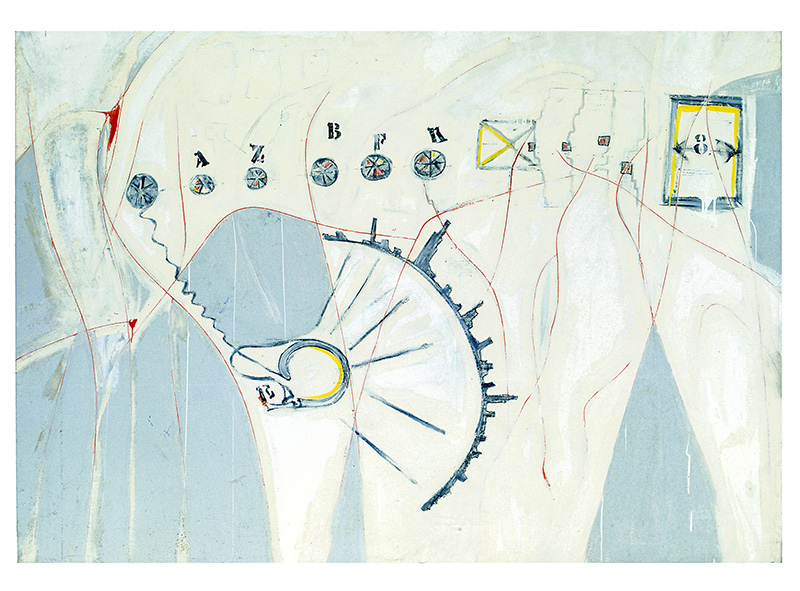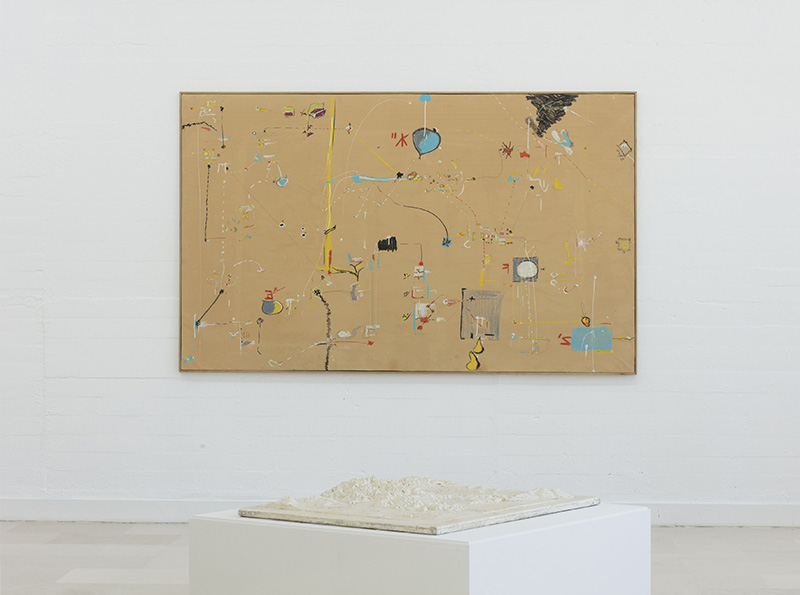ART CITIES:Nice-Gianfranco Baruchello
Through his long, and ongoing, career Gianfranco Baruchello has tackled a vast array of mediums spanning from painting to video via experiments between art and agriculture. Since the 1960’s Baruchello has focused on the semi psychogeographical mapping of the mind, deliberately choosing to expose the elements that compose the intellect in a small-scale, shunning away from the monumental and the grand
By Efi Michalarou
Photo: Vila Arson Archive
The first retrospective in France of Gianfranco Baruchello’s work is on presentation at Vila Arson. The exhibition spans his entirecareer from the early 1960s (when the self-taught artist began to make art after a few experiments in poetry and literature) to the present day. Activist, poet, film director, painter, definitively unclassifiable, Gianfranco Baruchello is of a generation of artists for whom art was first of all a way of life, and in his particular case an experimental meteor thrown onto the roads of existence. His work is like an attack against everything massive, continental, authoritarian: his fragmented thinking process, composed of notes and comments to the book of modernity, offers a lasting transition between this modernity and the contemporary world. Baruchello was born in 1924 in Livorno. His mother was a primary school teacher and his father was a lawyer, professor and manager of the General Fascist Confederation for Italian Industry. When Baruchello fled Italy to Ukraine with his diplomat uncle at 19, he began to make art; drawing and writing were his ways to work through the pain he witnessed during the fascist mass hysteria in Italy. In 1947 he worked for the chemical firm Bombrini Parodi, specialized in explosive devices. In 1949, encouraged by his father, he became head of the biochemical research and development for Delfino. But in 1959 Baruchello left the industrial world for good to dedicate himself entirely to art, and notably to painting. Baruchello spent time in New York, Paris and Milan, bearing witness to movements such as Arte Povera and Pop Art, and befriending artists and intellectuals such as Italo Calvino, Jean-François Lyotard, Alain Jouffroy, Felix Guattari and Ileana Sonnabend. In 1960 having gone to Paris he met the artist Roberto Matta and three years later the poet and critic Alain Jouffroy, who both encouraged him. In 1963 in New York, he became close to Marcel Duchamp, who familiarized him with the Avant-Garde scene and even made a sort of disciple out of him. The following year he met John Cage. In 1968, he founded “Artiflex”, a company for the “merchandising of everything”. Acting as operator, Baruchello published an advertisement in various financial magazines calling upon the readers to write to ask for samples. For three years, Artiflex sent small packages to its subscribers, containing various motley objects (candles wrapped in newspaper, pages torn from a book on Mao Zedong, locks of hair, a can of tuna, etc.). In June 1968 at the Tartaruga gallery in Rome, an unusual performance was held: in a room called “Finanziaria Artiflex” was a table with a cash register behind which a “salesgirl” was sitting. She was offering cardboard boxes filled with 5 lira coins that were sold 10 lira each! The next day the space had become an “Artiflex waiting room” with seats and small tables. This performance was probably the first manifestation of something akin to relational aesthetics. “From now on if you only do this work, I promise you that in two years you’ll be the greatest newspaper gluer of all time”, Ileana Sonnabend told during a 1972 meeting with the artist, then making sculptures composed of newspaper, wire wool, radio circuits and other objects fixed to painted board, Vexed by Sonnabend’s cynicism, Baruchello replied: “I’m sorry but I’m done. Now I want to do something else”. In 1973 Baruchello settled in the country at the center of Italy, and founded the “Cornelia Agricola S.P.A.”, a real independent farm with all sorts of activities, from growing vegetables and fruit trees to raising sheep. The experiment lasted until 1983 and inspired Baruchello a series of paintings. Baruchello has been featured five times in the Venice Biennale (1972, 1988, 1990, 2004 and 2013). His film “Verifica Incerta” comprised of random clips of mostly American films and footage of Marcel Duchamp and John Cage, was screened in 1965 at the Solomon R. Guggenheim Museum in New York.
Info: Curator: Nicolas Bourriaud, Villa Arson, 20 Avenue Stephen Liégeard, Nice, Duration: 10/3-27/5/18, Days & Hours: Wed-Mon 14:00-18:00, www.villa-arson.org





